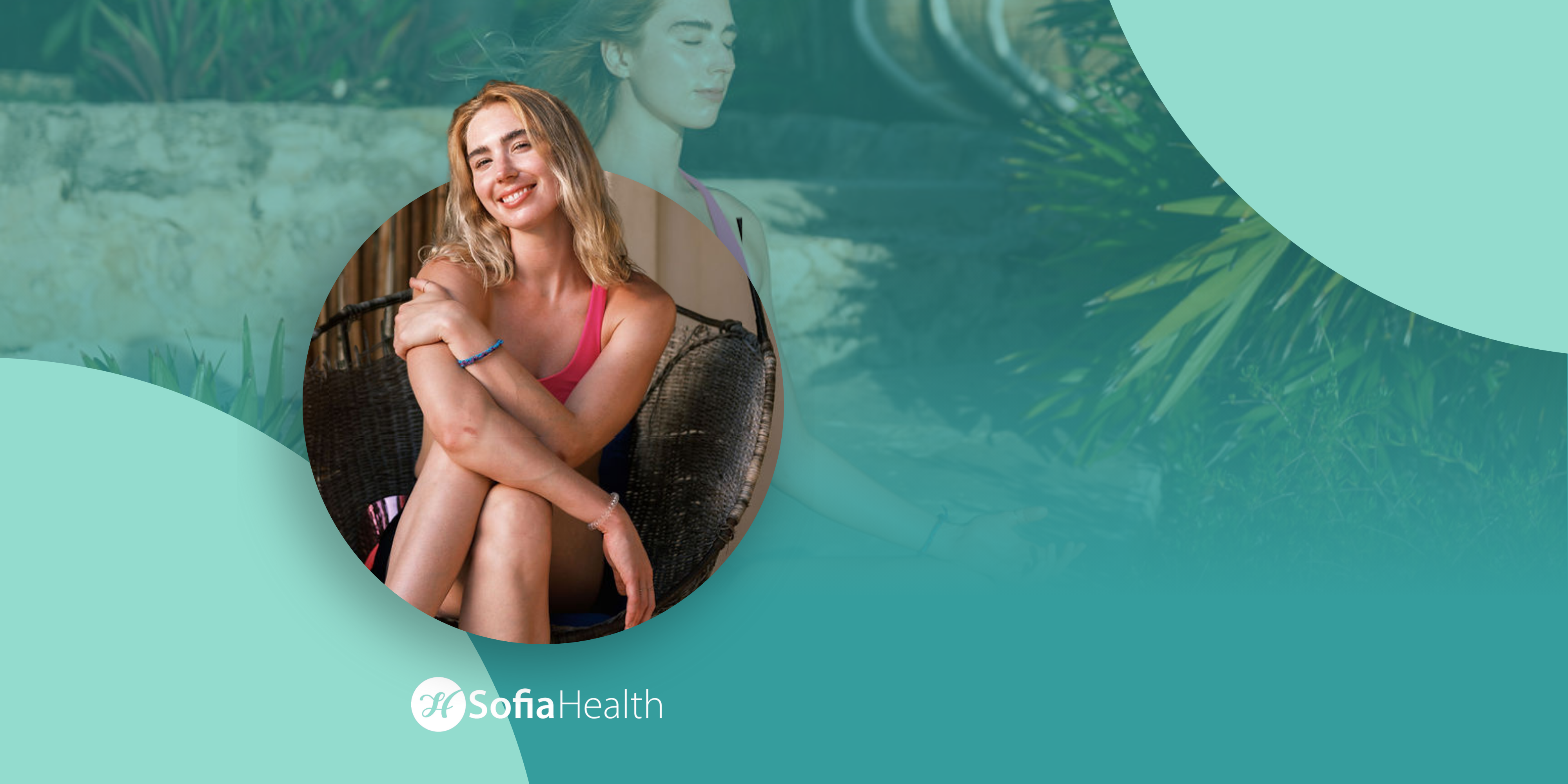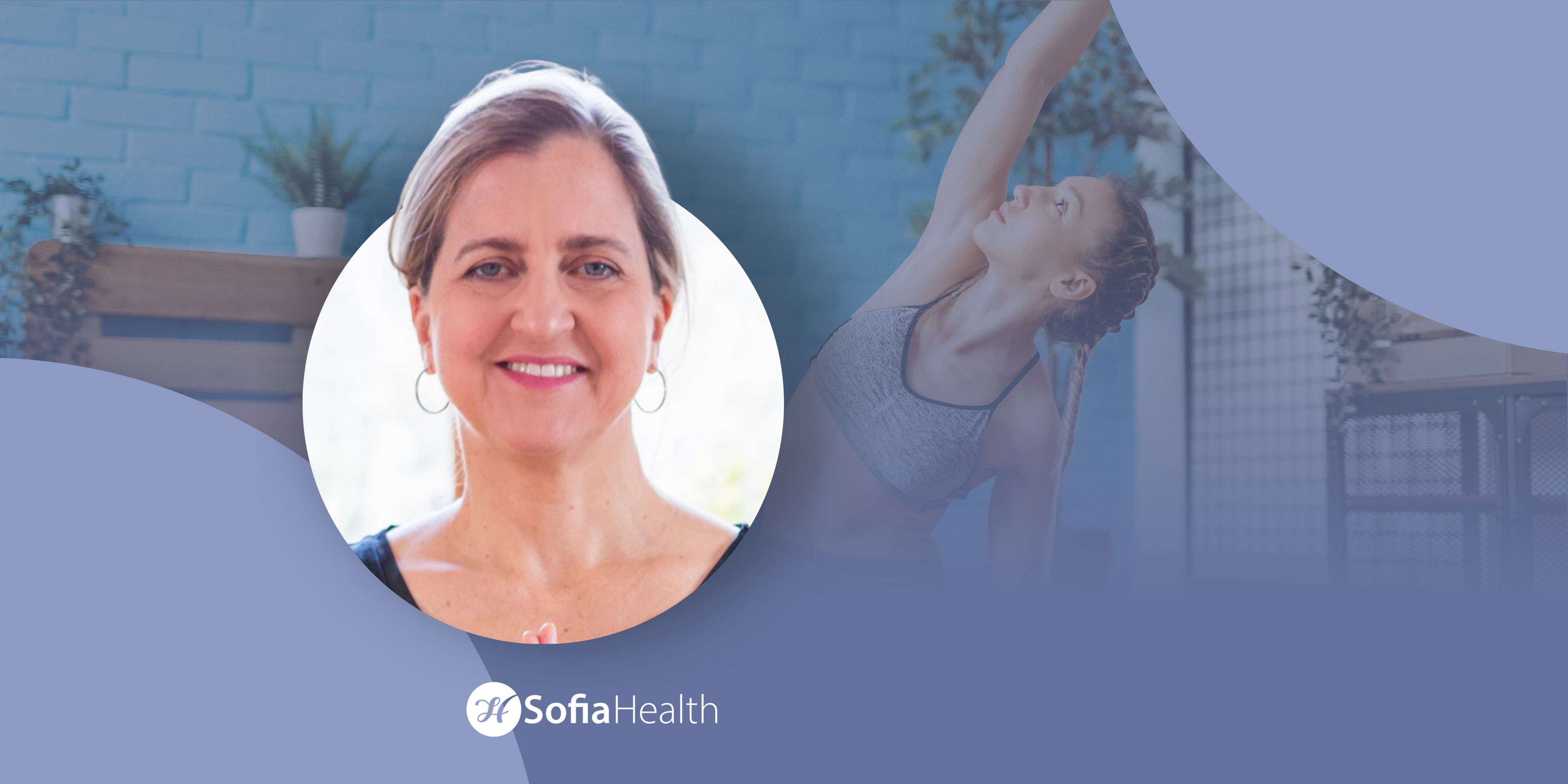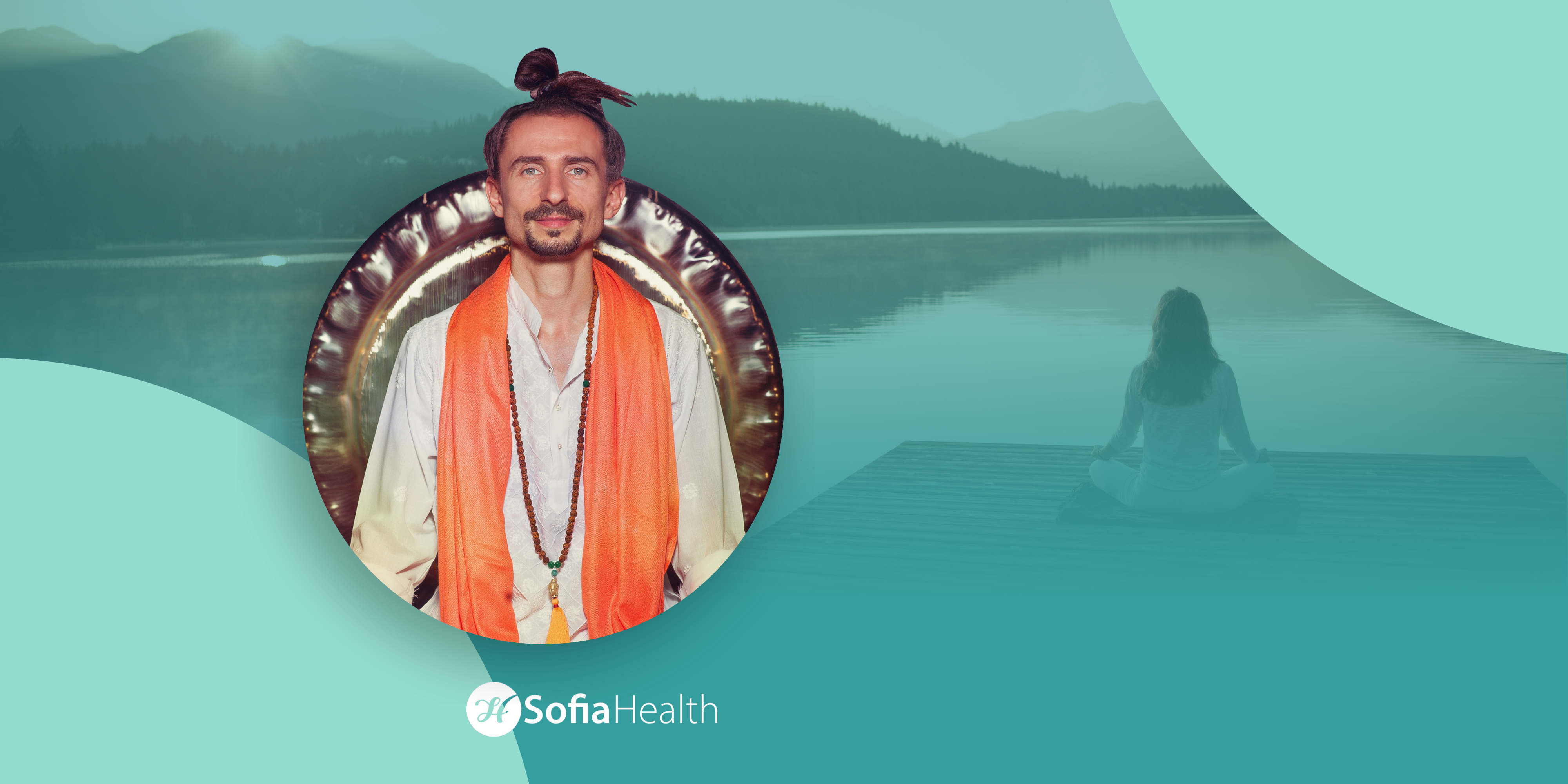Meet Katrina Baccetti, co-founder of High Vibe Collective and experienced yoga teacher based in San Francisco. With a background in psychology and philosophy, Katrina guides students on transformative journeys to unlock inner power. Join us as Katrina shares her expertise in this exclusive interview with Sofia Health.
Can you share more about the specific moments or experiences in your journey that led you to discover the transformative power of yoga?
I found yoga at a time in my life where I felt lost, disconnected, and unhappy with where I was. At the time, I was working in an office job that didn’t feel aligned and was simultaneously struggling to maintain healthy habits and routines that supported my mental and physical health. My yoga journey began when I started taking yoga classes at my local gym. The practice challenged my body’s strength and flexibility in new ways that I had not experienced previously - it was humbling. I was inspired to see how the teacher and many of the students were able to move their bodies with incredible grace and control.
Soon after I began my yoga journey, I went through a difficult break up. As I navigated an emotional time, I was naturally called to dive deeper into my practice. I found that practicing yoga was one of the only things that helped me get out of my head, and focus on myself and my well-being in the present moment.
Following months of practice, I experienced profound moments of growth and healing. I was so inspired by my newly blossoming yoga practice that I decided to quit my office job and travel to India to join a month-long teacher training program. Once I returned back to San Francisco, I knew it was my calling to share this transformative and healing practice with the world.
In what ways do you draw upon your athletic background to enhance the yoga learning experience for your students?
My background as a collegiate volleyball athlete taught me the power of discipline, consistency, and focus. Prior to my discovery of yoga, I had a great deal of experience working with strength training, conditioning, and plyometrics, but yoga asana offered many new challenges for my strength and flexibility.
My athletic background helped encourage me to stay consistent with my practice, even when many results were not immediate. With consistent practice, my body began to open up and in time, I started to find myself moving into advanced asanas with greater ease.
I remind my students that discipline is one of the greatest forms of self-love. It’s about deciding to show up for yourself, even on those days when you don’t necessarily feel motivated or inspired to practice. Motivation is not always present and on our practice journey it will ebb and flow, come and go. Action builds motivation, and sometimes we just need to start moving again to rediscover our inspiration. One of my favorite sayings is “never have I ever practiced yoga and felt worse after.” Even on those days where I’ve found myself lacking motivation, choosing to practice anyways has always led to me feeling better afterwards. I’ve learned that if we can overcome our initial resistance to practice, there is an abundance of progress, growth, healing, and wisdom just waiting for us to discover.
Sofia Health connects you to traditional, integrative, nutritional, holistic, and spiritual healing professionals to help you personalize your healing journey.
What type of yoga is best for beginners?
There are many traditions and styles of practice: ashtanga, vinyasa, yin, hatha, restorative, and bhakti, just to name a few. I believe that it’s about finding a teacher and a practice that resonates with you. As a beginner, this will require you to leave your comfort zone, explore your options, and see what teachers and practices resonate most with you.
Many yoga teachers offer “all-levels” yoga classes, where they offer 2 - 3 pose options for students to explore with varying levels of difficulty. I will frequently see beginners in all-levels classes choosing to take the most advanced option. Because of this, I like to remind students to start where they are, and to not feel pressured to try the most advanced asana variations.
This practice calls us to listen to our body, release comparison to others, and to practice at a level that feels aligned in the moment. Every practice is a new journey and what feels best one day might not feel best the following day. A helpful tip for beginners is - if you’re unable to breathe in the pose or transition, explore a less difficult variation that allows for complete breath regulation.
Your 6-week training plan focuses on building strength, stability, and core awareness. What specific benefits can participants expect regarding proper alignment, enhanced core function, and overall health and vitality?
The Arm Balance Accelerator course is ideal for students with some prior yoga experience who want to deepen their practice and solidify their core strength. The 6-week training plan offered in this course will encourage students to practice 20 minutes a day, 6 days a week, to build the core strength and mobility required to perform arm balancing postures with greater awareness and ease. Students who take this course can expect to feel stronger overall and more connected to their core while moving on (and off) the mat. This course will also support students in developing a daily practice ritual that is playful, challenging, and effective.
How can incorporating yoga into a fitness routine alleviate or prevent wrist pain?
Pain is our body’s way of communicating to us. When wrist pain arises, it’s calling us to evaluate our habits and make necessary changes to alleviate our pain. If wrist pain is present, this indicates that there is likely a need to adjust your habits and/or strengthen and stretch your wrists more frequently. Beginner yogis might experience wrist fatigue and/or wrist pain if they are not accustomed to bearing weight on their hands so frequently.
In my experience, when wrist pain arises in practice, it might suggest that the wrists need a longer time to warm up. Wrist pain in practice also suggests that hand placement, grip, and alignment should be evaluated and corrected immediately so we don’t build unhealthy habits that eventually lead to more pain.
It takes time and practice for the wrists, hands, and forearms to get stronger - I encourage students to be patient in this process. Until wrist pain subsides, modify poses as needed and avoid poses that cause pain in the moment. Pushing through pain is not beneficial here - focus on improving your wrist mobility and strength first.
Your philosophy mentions manifesting a life filled with meaning. How do you guide your students in incorporating mindfulness into their daily lives to achieve this?
Mindfulness begins with self-awareness. Our time and energy is our most precious resource. In the modern world, it can be so tempting to let ourselves get distracted by the infinite information we have available at our fingertips. It’s important to be aware of what exactly we are investing our precious time and energy into, at every moment. I find it helpful to begin by observing our choices, actions, and habits on a moment to moment basis. Are my choices and habits truly serving my highest good?
It’s up to us to uncover the deeper meaning and wisdom that underlies our unique life experiences. For example, I’ll ask questions like - What did I learn from that challenging experience? What might this situation be teaching me? How am I choosing to think about myself and my journey? Am I seeing the abundance in all things or am I constantly complaining and judging?
We must open our hearts to consciously find new perspectives, look for silver linings within our challenges, and trust that everything that arises on our journey is intentionally here to teach us something. I’ve come to learn that it’s unhelpful and limiting to position ourselves as a victim in life. Although there are many things in life that are completely out of our control, we maintain the power to choose how we frame things and experiences in our mind. We are the authors of our own life stories and we possess the power to consciously choose to think about things in a way that is both empowering and healing.
The ancient wisdom of yoga offers us tools to minimize unnecessary suffering. Suffering arises from attachment and resistance to what is. I’ve learned that in order to minimize unnecessary suffering, we must be willing to make peace with the past, forgive freely, and open our hearts to love unconditionally.
It’s up to us to discover what our purpose is. What inspires me? When do I feel my best? What am I passionate about? What brings me the most joy? What gifts and wisdom do I have to share with the world? These questions are just a place to start. Once we start listening to our heart and following that inner guidance, we start to align with our destiny.
What are your most helpful tips for optimal health?
Movement is essential for physical health. I view yoga asana as a medicine that heals and integrates the body. With daily practice, yoga helps us maintain our strength and mobility as we age.
Optimal health extends beyond the physical body - it’s our body, mind, and emotional well-being. The way we think, and the way we feel, creates a state of being. The way we feel is also heavily influenced by our consumption habits - the food we are eating, and the information we are consuming. I like to ask myself - Is this choice truly supporting my health, vitality, and well-being?
The journey towards optimal well-being begins with developing self-awareness. This process begins with observing where we might currently be sabotaging ourselves through our own limited thinking patterns and potentially misaligned actions and habits. The mind is incredibly powerful and it shapes our personal experience of the world. The mind is also intrinsically connected to our physical and emotional health. For example, if we are constantly thinking fearful, anxious, or stressed out thoughts, we will feel the emotions of fear, anxiety, and stress arise in our body.
When the mind is constantly busy narrating, commenting, and over-analyzing, our perception of reality becomes distorted. Depending on the nature of the thoughts that arise in our mind, our personal experience of reality can feel incredibly empowering or disempowering. If we want to create an optimal state of being within, we must learn to master our focus, attention, and mind. When the mind is still, peace and wholeness arise effortlessly.
More from Sofia Health
Explore more enlightening interviews with specialists at Sofia Health. Gain diverse insights, practical tips, and transformative advice on health and wellness topics. Whether it's nutrition, mental well-being, or holistic healing, these expert interviews provide valuable resources for your journey to holistic health. Please read on and help yourself with knowledge for a healthier life.
Whether you prefer a subscription over live classes or want to shop for individual services, classes, or products, we have you covered. We're here to help you meet your wellness goals for physical, mental, emotional, and spiritual health. You can also take advantage of the services offered by one of the providers at the Sofia Marketplace.
Better yet, make a daily dose of wellness part of your routine. Sofia Prime offers both live classes and an extensive on-demand video library. Choose from high-quality offerings in wellness, nutrition, fitness, and meditation.
Start your two-week trial today and discover the difference that dedication and expert help can make.
Disclaimer: The Sofia Unfiltered Blog by Sofia Health is for general informational and entertainment purposes only and does not constitute the practice of medicine, nursing, or other professional healthcare services, including the giving of medical advice. No doctor/patient relationship is formed. The use of information on this article or materials linked from this article is at the user’s own risk. The content of this article is not intended to be a substitute for professional medical advice, diagnosis, or treatment. Users should not disregard or delay in obtaining medical advice for any medical condition they may have. For any health concerns, users should seek the assistance of their healthcare professionals.






